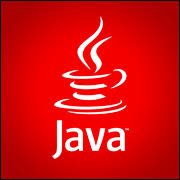linux training in noida sector 15
linux
training in noida sector 15:- From mobile phones to vehicles,
supercomputers and home mechanical assemblies, home work territories to huge
business servers, the Linux working system is everywhere.Linux has been around
since the mid-1990s and has since touched base at a customer base that
navigates the globe. Linux is very: It?s in your phones, your indoor
controllers, in your vehicles, coolers, Roku devices, and TVs. It in like
manner runs most of the Internet, most of the world's best 500 supercomputers,
and the world's stock exchanges.
Regardless, other than being the establishment of choice to run
work regions, servers, and introduced systems over the globe, Linux is one of
the most strong, secure and easy working structures available.
Here is every one of the information you need to get up to speed
on the Linux organize.
Much equivalent to Windows, iOS, and Mac OS, Linux is a working
system. In reality, one of the most unmistakable stages on earth, Android, is
powered by the Linux working structure. A working structure is customizing that
manages most of the gear resources related with your work zone or PC.
Fundamentally, the working structure manages the correspondence between your
item and your hardware. Without the working structure (OS), the item wouldn?t
work.
The Linux working system contains a couple of novel pieces:
1. Bootloader –
The item that manages the boot method of your PC. For most customers, this will
basically be a sprinkle screen that springs up and over the long haul leaves to
boot into the working system.
2. Kernel – This
is the one piece of the whole that is truly called ?Linux?. The part is the
focal point of the system and manages the CPU, memory, and periphery
contraptions. The bit is minimal level of the OS.
3. Init structure
– This is a sub-system that bootstraps the customer space and is blamed for
controlling daemons. One of the most by and large used init structures is
systemd? which in like manner happens to be one of the most questionable. It is
the init structure that manages the boot technique, when the fundamental
booting is given over from the bootloader (i.e., GRUB or GRand Unified
Bootloader).
4. Daemons – These
are establishment organizations (printing, sound, booking, etc.) that either
start up during boot or after you sign into the work zone.
5. Graphical
server – This is the sub-structure that demonstrates the plans on your screen.
It is regularly implied as the X server or just X.
6. Desktop
condition – This is the piece that the customers truly coordinate with. There
are various work zone conditions to peruse (GNOME, Cinnamon, Mate, Pantheon,
Enlightenment, KDE, Xfce, etc.). Each work region condition joins worked in
applications, (for instance, report managers, game plan devices, web programs,
and games).
7. Applications –
Desktop circumstances don't offer the full display of uses. Much equivalent to
Windows and macOS, Linux offers stacks of stunning programming titles that can
be viably found and presented. Most present day Linux flows (more on this
underneath) join App Store-like gadgets that unite and streamline application
foundation. For example, Ubuntu Linux has the Ubuntu Software Center (a rebrand
of GNOME Software? Figure 1) which empowers you to quickly look among the a
colossal number of uses and present them from one joined territory. linux
training course in noida sector 15
|
|
|
|
|
|
|
|
|
|
|
|
|
|
|
|
|
|
|
|
|
|
|
|
|
|
|
|
|
|
|



Comments
Post a Comment